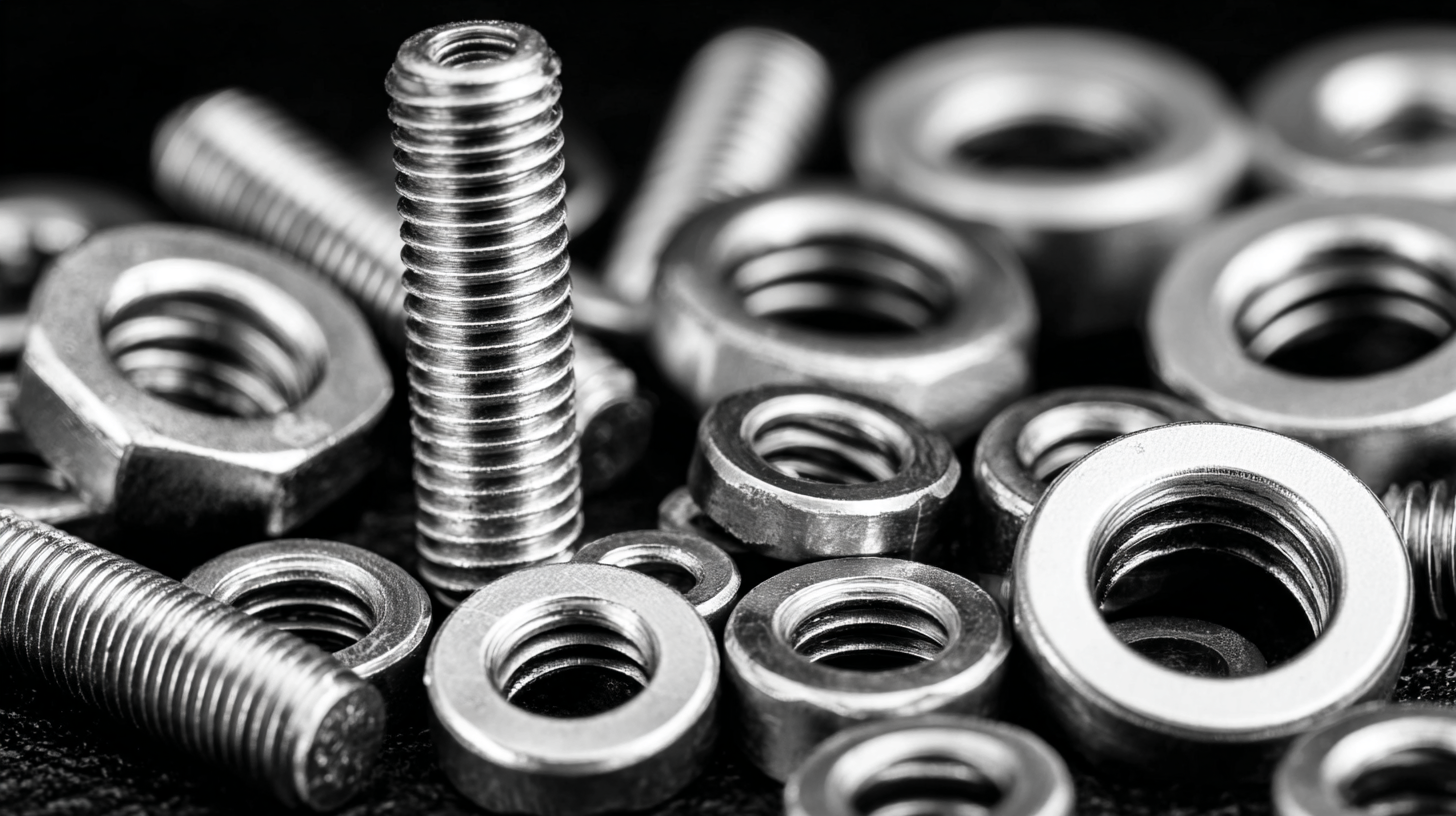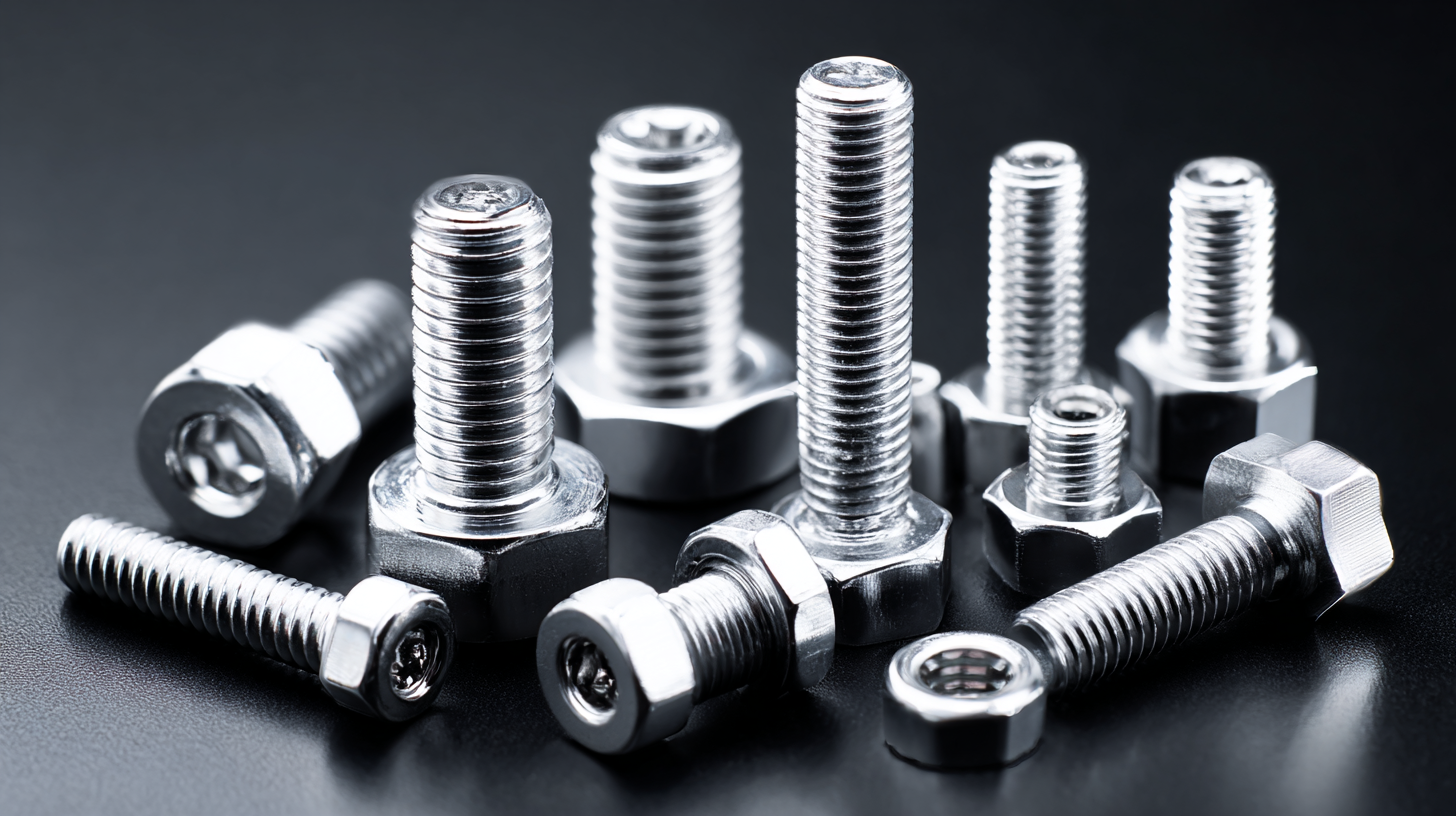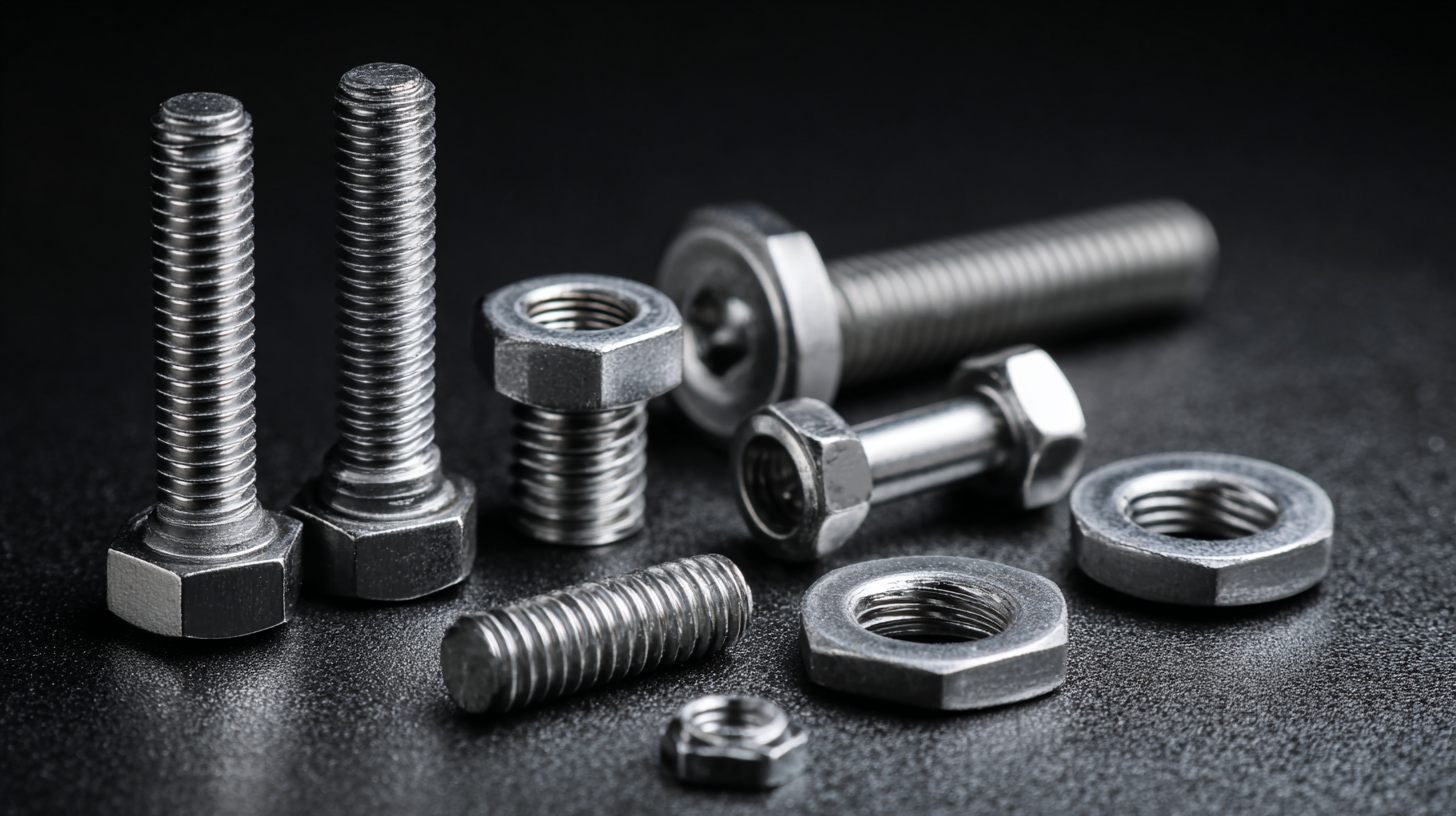In the world of manufacturing and construction, understanding the technical specifications of stainless steel fasteners is crucial for ensuring quality and longevity in various applications. According to a recent industry report by Freedonia Group, the demand for stainless steel fasteners is projected to grow at an annual rate of 4.1% through 2024, driven by increased construction activity and advancements in fastener technology. These fasteners are renowned for their corrosion resistance, high tensile strength, and versatility, making them essential in industries ranging from automotive to aerospace. However, with a wide variety of options available—such as 304, 316, and specialty-grade stainless steels—the selection process can be daunting. This blog will delve into the key technical specifications of the best stainless steel fasteners and provide insights on how to choose the right one for your specific needs, ensuring durability and performance in any project.

The emerging trends in stainless steel fastener technology for 2025 highlight a significant shift towards innovation and sustainability, driven by industry demands and regulatory changes. As companies face new compliance policies due to U.S. tariffs on aluminum and steel, there's a growing emphasis on sourcing and utilizing high-quality stainless steel fasteners that offer both durability and resistance to corrosion. This market evolution reflects not only the necessity to adapt to economic shifts but also the commitment to reduced environmental impact.

Tips for Choosing the Right Stainless Steel Fastener: first, consider the specific application and loading requirements. Different grades of stainless steel, such as 304 and 316, serve different purposes, so select based on corrosion resistance and strength needed for your project. Secondly, keep an eye on emerging technologies in fastener design, such as automated production techniques and eco-friendly materials, which could enhance performance and sustainability. Lastly, always prioritize quality over cost, as investing in reliable fasteners can save time and resources in the long run, particularly for industries like aerospace where precision is critical.
 When selecting stainless steel fasteners, it’s crucial to consider several key technical specifications to ensure optimal performance and longevity. One of the primary factors is corrosion resistance, which varies based on the grade of stainless steel. Common grades such as 304 and 316 offer excellent resistance to rust and damage, with 316 being particularly suitable for marine environments due to its higher molybdenum content. Evaluating the environment in which the fasteners will be used helps in selecting the appropriate grade.
When selecting stainless steel fasteners, it’s crucial to consider several key technical specifications to ensure optimal performance and longevity. One of the primary factors is corrosion resistance, which varies based on the grade of stainless steel. Common grades such as 304 and 316 offer excellent resistance to rust and damage, with 316 being particularly suitable for marine environments due to its higher molybdenum content. Evaluating the environment in which the fasteners will be used helps in selecting the appropriate grade.
Another vital specification is the tensile strength, which indicates how much load a fastener can endure before failing. Fasteners are typically rated based on their tensile strength, and opting for a higher rating can provide additional security in critical applications. Additionally, thread type, size, and style play a significant role in ensuring compatibility with the materials being joined. Choosing the right combination of these specifications can lead to enhanced structural integrity and performance durability, making detailed assessment essential before making a purchase.
When it comes to selecting the right stainless steel fasteners, it's essential to understand the different types available.
Fasteners are categorized primarily by the grade of stainless steel used, which significantly affects their corrosion resistance, strength, and durability. The most common grades include 304 and 316 stainless steel.
While 304 is suitable for general indoor applications due to its resistance to oxidation, 316 offers superior protection against saline environments and is often recommended for marine applications.
According to industry reports, fasteners made from 316 stainless steel can withstand nearly double the corrosive environment than those made from 304.
Tip: Always consider the operating environment of your project; for outdoor or marine applications, opt for grade 316 stainless steel to ensure longevity and reliability.
Additionally, the design of the fastener plays a critical role. Common types include bolts, nuts, screws, and washers, each designed to hold materials together in specific ways. Another essential factor to consider is the thread type; coarse threads provide better grip in softer materials, while fine threads are ideal for precision fastening in harder materials.
Data indicates that using the right thread can enhance load distribution and fastening efficiency by up to 20%.
Tip: When selecting thread types, evaluate the materials you are working with to choose the best match, ensuring optimal performance and safety in your applications.
When selecting stainless steel fasteners for extreme environments, assessing their corrosion resistance is paramount. Stainless steel is renowned for its durability, but not all grades perform equally under harsh conditions. It is essential to consider factors such as the specific environment, whether it involves exposure to saltwater, high humidity, or extreme temperatures. For instance, fasteners made from marine-grade stainless steel offer superior resistance to pitting and crevice corrosion compared to standard grades, making them ideal for coastal applications.
Furthermore, employing robust testing and evaluation methods can help in understanding and predicting the performance of fasteners over time. Techniques such as electrochemical analysis can reveal insights into the corrosion potential of different fastener materials when subjected to specific environmental stressors. Non-destructive testing methods also play a critical role in assessing integrity and identifying defects before they lead to failure. By integrating these advanced assessment strategies into the selection process, engineers and procurement teams can ensure the longevity and reliability of stainless steel fasteners in demanding applications.
This bar chart provides an overview of the corrosion resistance ratings of different types of stainless steel fasteners. The ratings range from 1 to 10, where a higher rating indicates better resistance to corrosion, making it crucial to choose the right type for extreme environments.
When selecting the right stainless steel fastener for your project, it's essential to consider specific factors that can significantly affect performance and durability. According to a recent industry report by the Fastener Industry Coalition, approximately 70% of fastener failures in construction originate from improper material selection. This highlights the need for understanding the various grades of stainless steel, such as 304 and 316, each designed for different environments and conditions. Grade 316, for instance, offers superior corrosion resistance, making it ideal for marine or acidic environments.
Additionally, ensuring the fastener's size and type are compatible with your application can enhance efficiency and reliability. The same report indicates that using the wrong fastener type can lead to structural failures, with over 10% of construction projects experiencing such issues due to mismatched fasteners. Factors like load-bearing requirements, environmental exposure, and even aesthetic considerations should be evaluated when making your choice. Engaging with knowledgeable suppliers and referencing technical specification sheets can further guide you in selecting the most suitable fastener for your specific needs, ultimately ensuring a successful project outcome.
